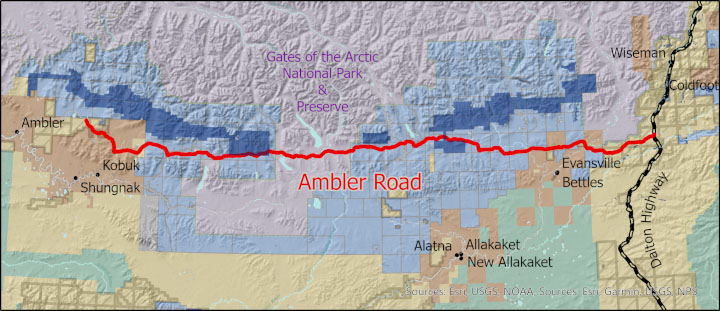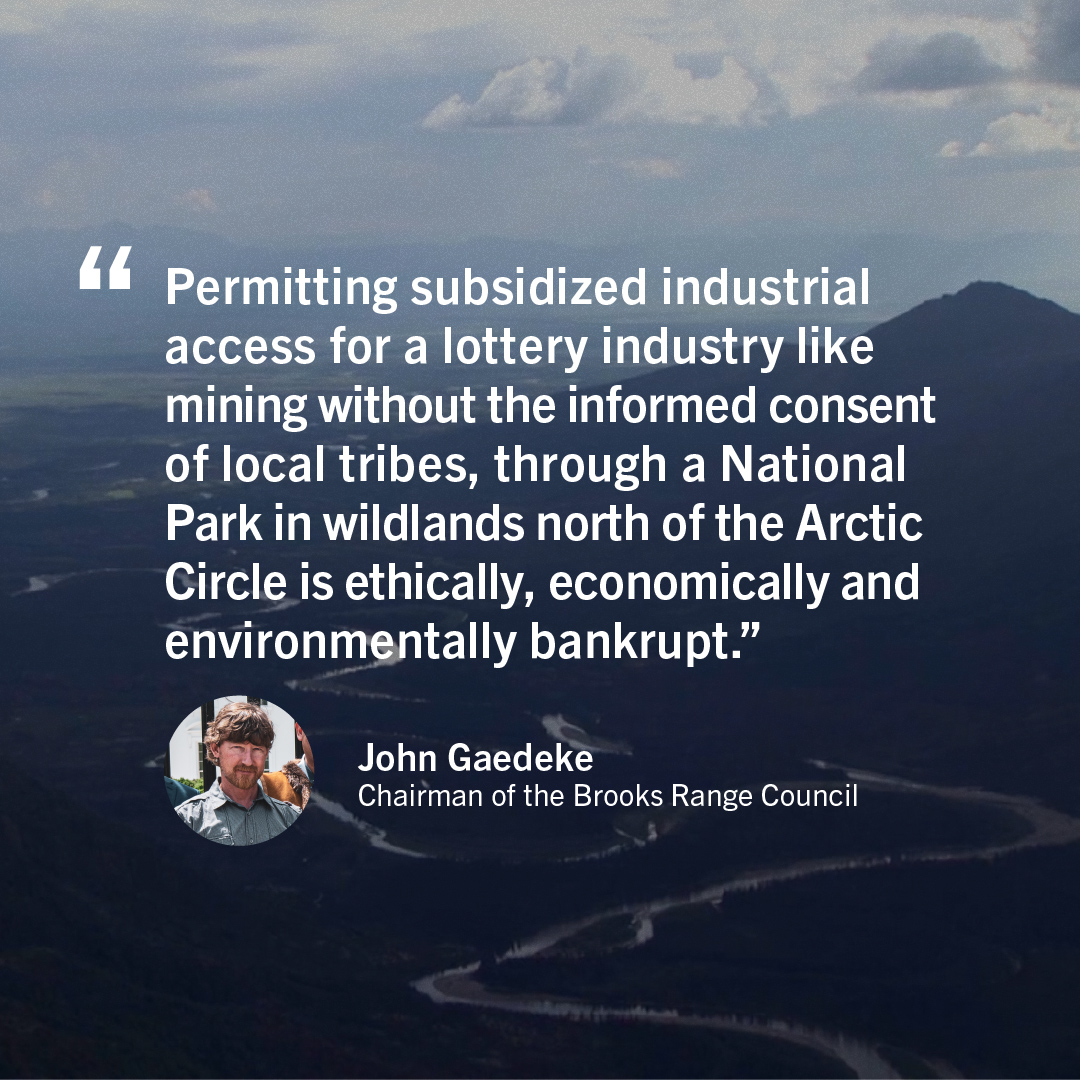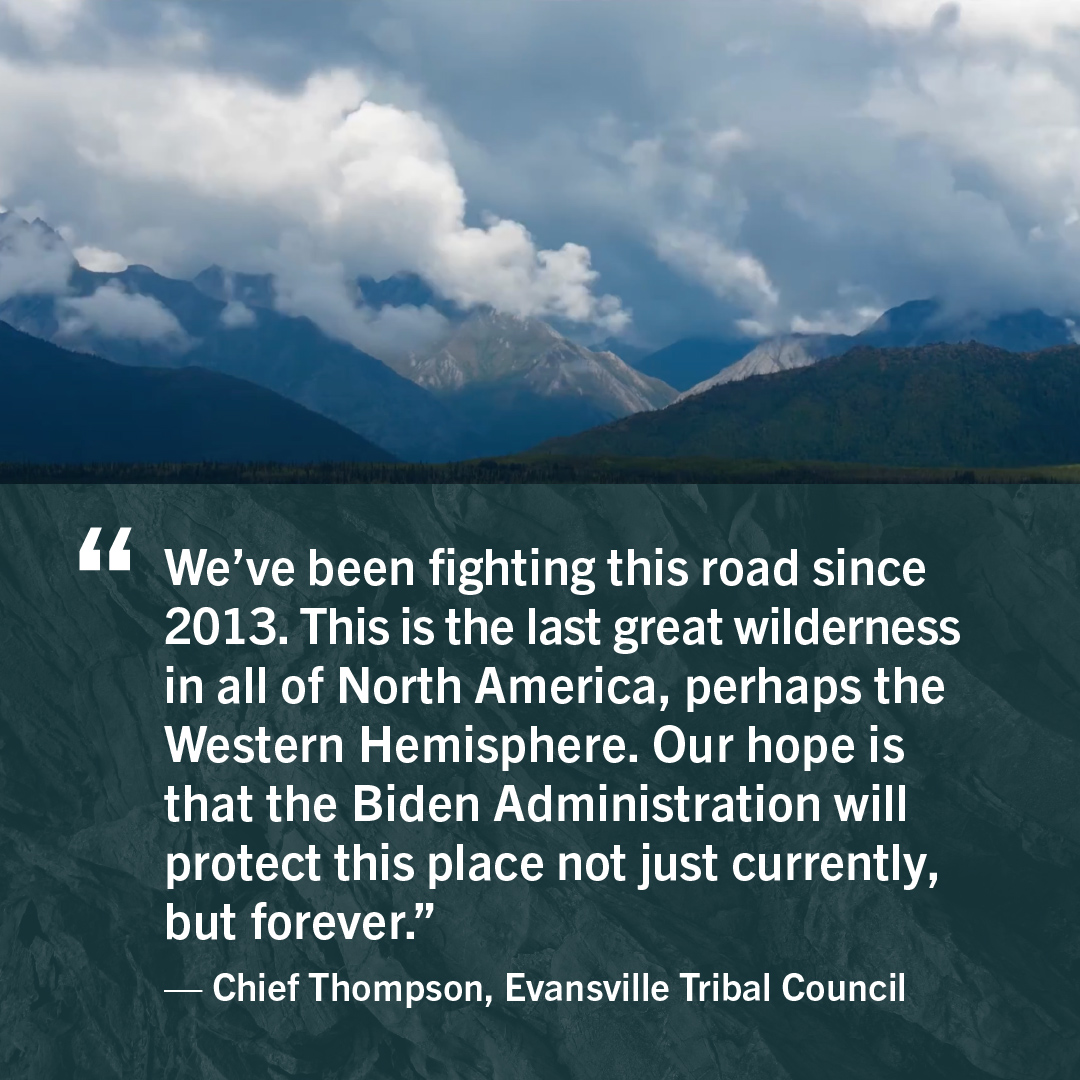
Ambler road threatens dozens of communities. Join the fight to stop it.
By Dawnell Smith
The proposed Ambler industrial transportation corridor, commonly called the Ambler road, threatens the clean water and health of dozens of communities in the southern Brooks Range, according to the U.S. Bureau of Land Management’s draft supplemental environmental impact statement released this month.

Construction and operation of the 211-mile industrial road would cut through thousands of rivers and streams and thousands of acres of wetlands. It would pollute clean water used for drinking and some of the last remaining streams in the country without industrial contaminants. It would harm sheefish and salmon spawning habitats, it would disrupt the migration of one of the greatest caribou herds left on Earth, and it would pose a profound threat to the physically and culturally vital hunting practices of local people.
The Evansville Tribal Council responded to the draft impact statement by urging the Biden administration to prioritize local communities and cultures by not authorizing the Ambler proposal and revoking all permits.
“The proposed road, which would cut through the heart of our ancestral lands, carries significant environmental risks,” said the council’s statement. “The potential for habitat destruction, water contamination, and disruption to local wildlife populations is of great concern to our tribes in the face of climate change. We stand united in our belief that any short-term economic gains that may be derived from this project cannot outweigh the long-term environmental devastation it could cause.”
This industrial mining proposal, if approved, would let outside mining companies profit from the exploitation of an area essential to local communities by touting a misleading green energy talking point. Copper, cobalt, and zinc in this region are not critical to global demand or national security, and industry claims of the deposit’s significance are highly speculative and largely baseless.
Speak up now
A 60-day public review and comment period on the draft impact statement begins October 20 with a deadline of December 22, along with a series of public hearings and meetings with Tribes. This is the time to ask the agency to address concerns in the final environmental impact statement and in its final permit decision. Here is the online link to comment and some things worth sharing:
- The region’s communities don’t want this road or the open pit mines that will follow. Listen to them.
- This industrial road is a clear threat to clean water, wildlife, and all the people of this region who depend upon it for community and cultural sustenance.
- The Biden administration has the authority to revoke these permits and protect this region, and it should do so.
If you want to add more specific details, here are a few ideas:
- Clean water is life. This project would cut across thousands of streams and rivers that fish and wildlife rely on for drinking water and habitat. Tell the agency that the evaluation of impacts on aquatic resources remains inadequate and needs to be greatly expanded.
- Note that the permit applicant, the Alaska Industrial Development and Export Authority, provided very little information about the road’s location and design, making it impossible for the agency to properly analyze its full impacts.
- Tell the agency that its draft statement fails to look at the full impacts of gravel mining on public health, local communities, and animals, and that should be fixed.
- Ask the agency to not authorize the project or to analyze more protective alternatives. The project options outlined in the draft SEIS fail to protect local communities, animals, and the land, water, and air, and that needs to be fixed.
Suing agencies can make a difference and also feel like a hamster wheel
The agency’s latest analysis and draft impact statement captures far more local voices and concerns than those used to authorize the road in 2020. That’s good to see.

Two lawsuits were filed after those 2020 approvals, including one that Trustees for Alaska filed with the Western Mining Action Project on behalf of 11 groups suing the Trump administration for violating multiple laws when giving the project the green light. A few years later in 2022, the Biden administration acknowledged some, but not all, of the legal problems with the Ambler approval, and asked the court to pause those lawsuits.
The court agreed to the pause, and we’ve been waiting ever since. It’s clear, though, that the latest supplemental environmental impact statement fails to address all the legal problems with the first. If anything, this draft “demonstrates that the only defensible option for the Biden administration is to not authorize this disastrous project,” said Bridget Psarianos, senior staff attorney with Trustees. “This SEIS fails to fill in the numerous gaps about the project’s location and design, making it impossible for the agencies to look at the full impacts of the proposed Ambler road on Brook Range water, air, animals, and especially local people. The draft also fails to provide additional alternative project options that offer better protections, and there are little, if any, meaningful changes to mitigate impacts such as the release of asbestos into the air near communities and the disruption of caribou migrations.”


